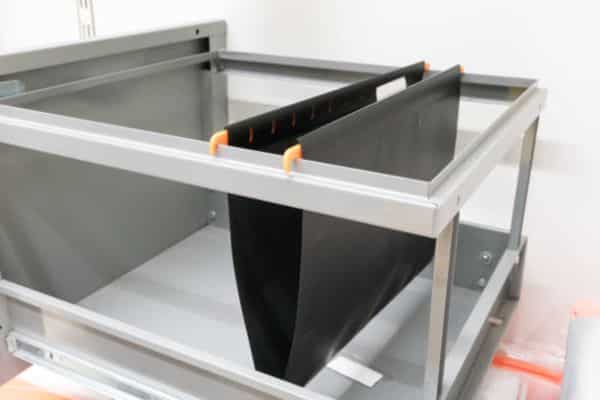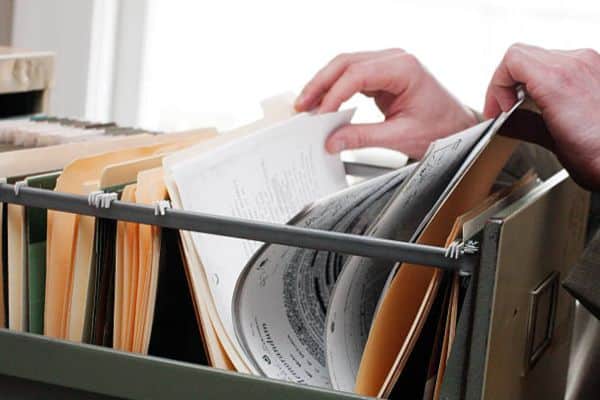I’ll never forget my first experience with a filing cabinet without rails. At first, it seemed like a smart choice. It was small and fit perfectly in my space. But once I started organising my papers, things didn’t go as planned. My folders kept tipping over, making the whole process more difficult than it needed to be. After a bit of frustration, I figured out a few tricks to make it work. I’ll share those tips with you today. This article will teach you how to use A filing cabinet without rails in a way that keeps everything organised and easy to access.
Understanding the Challenge of Filing Cabinets Without Rails
Why Rails Matter (Or Don’t)
Rails help keep files in place. They guide the folders and prevent them from tipping over. Without rails, it might seem like things will get messy. But after using a rail-less cabinet, I realised it’s not about the rails. You can organise your files just as well with a little creativity.
People choose railless cabinets for different reasons. They take up less space and look cleaner. You don’t have to worry about fitting everything into specific slots. With the right tools, you can organise papers without the need.
Common Issues
One problem is that files can slide around. They may tip over easily. This can make organising feel frustrating. But with a good system in place, this issue can be solved.
Another challenge is organising larger or oddly shaped papers. They don’t always fit into standard folders. However, there are easy ways to handle these papers, which I’ll share later.
Benefits of Using a Filing Cabinet Without Rails
Using a rail-less system has some advantages. First, it’s flexible. You can organize your files however you like. There’s no rigid structure to follow.
These cabinets are also space-efficient. You can use the full interior. This allows for more room to organise. You can even add dividers or use storage boxes to keep things neat.
Step 1: Choose the Right Folders

The first step is selecting the right folders for your rail-less filing cabinet. Hanging folders are a great choice for organising. They stay upright, even without the added support. Manila folders also work well, though they may need additional organisation tools to keep them from tipping.
Choosing the right folder type ensures your files stay in place and are easy to access. Opt for durable folders that suit your filing needs. High to hang upper cabinets are also an ideal storage solution for keeping your documents and folders organised. With the right shelving, you can maximise space while ensuring your files remain accessible.
Step 2: Use Stackable Dividers
Stackable dividers are key when using. These dividers help keep files upright, preventing them from falling over. They can be adjusted to create compartments for various categories of documents. The benefit of stackable dividers is their flexibility; you can add or remove sections as needed, making them a great fit for rail-less cabinets.
Step 3: Distribute Weight Evenly

To avoid sagging or tipping, make sure to balance the weight of your folders. If one side of the cabinet is heavier than the other, It can cause instability. Distribute your files evenly across the cabinet. Lighter files should be placed at the front, While heavier files go towards the back. This method ensures that your cabinet remains steady and your files stay in place.
Step 4: Label Your Files Clearly
Clear labelling is essential for easy retrieval. Use durable labels or tabs to identify each file’s contents. This will save you time when looking for specific documents. Ensure your labels are legible and placed in a consistent location on the folder. Proper labelling makes your filing system much more efficient.
Clear labels allow you to find what you need quickly and keep your system organised.
Step 5: Maintain a Consistent System

Keeping your filing system organised requires regular maintenance. Set aside time to declutter and update your files. This could mean getting rid of outdated documents or reorganising your files as your needs change. A consistent filing system will keep everything in its place, reducing the chance of mess and confusion.
Different Types of Filing Cabinets and When To Use Each

Vertical Filing Cabinets
Vertical filing cabinets store files upright. It can feel unstable. However, you can still keep things organised with dividers or hanging folders. These cabinets are ideal for smaller spaces And moderate amounts of paperwork. They are perfect when you need quick access To your files but don’t require a lot of storage space.
Lateral Filing Cabinets
Lateral filing cabinets offer more space and store files side by side. Without rails, you can still keep files neat using dividers or boxes. These cabinets are great for larger volumes of paperwork. They allow for better organisation and are perfect for those with many files to manage.
Portable Filing Cabinets
Portable filing cabinets Are compact and easy to move. They are best for small spaces Or mobile setups. You can use dividers or boxes to keep files organised. These cabinets Are ideal for those who need A flexible filing system that can be moved easily.
Expert Advice on Organising
How I Make It Work
Over the years, I’ve learned a few tricks. One key tip is to use stackable dividers. These dividers keep files upright and prevent them from tipping over. I also make sure not To overload the cabinet. Regularly going through my files and clearing out old ones keeps the system efficient. Lastly, I label everything clearly, Making it easy to find what I need.
When to Upgrade to a Cabinet With Rails
A rail-less cabinet works well for many, but it may not be for everyone. If you find your files tipping over often or struggle with organisation, upgrading to a cabinet with rails might help. Rails provide more stability and help keep files in place. If your filing needs have grown, or you want a more structured system.
Conclusion
In this article, we’ve covered how to use a filing cabinet without rails effectively. By choosing the right folders, using stackable dividers, distributing weight evenly, and labelling your files clearly, you can keep your cabinet organised and functional. Maintaining a simple, consistent system will ensure that your system remains efficient and clutter-free.
I encourage you to try these tips and tailor your work for your needs. If you have any questions or need further help, feel free to leave a comment. I’d be happy to assist you!


